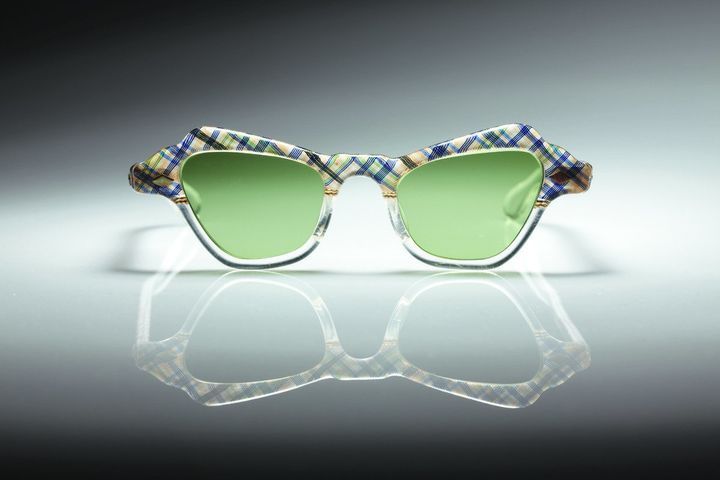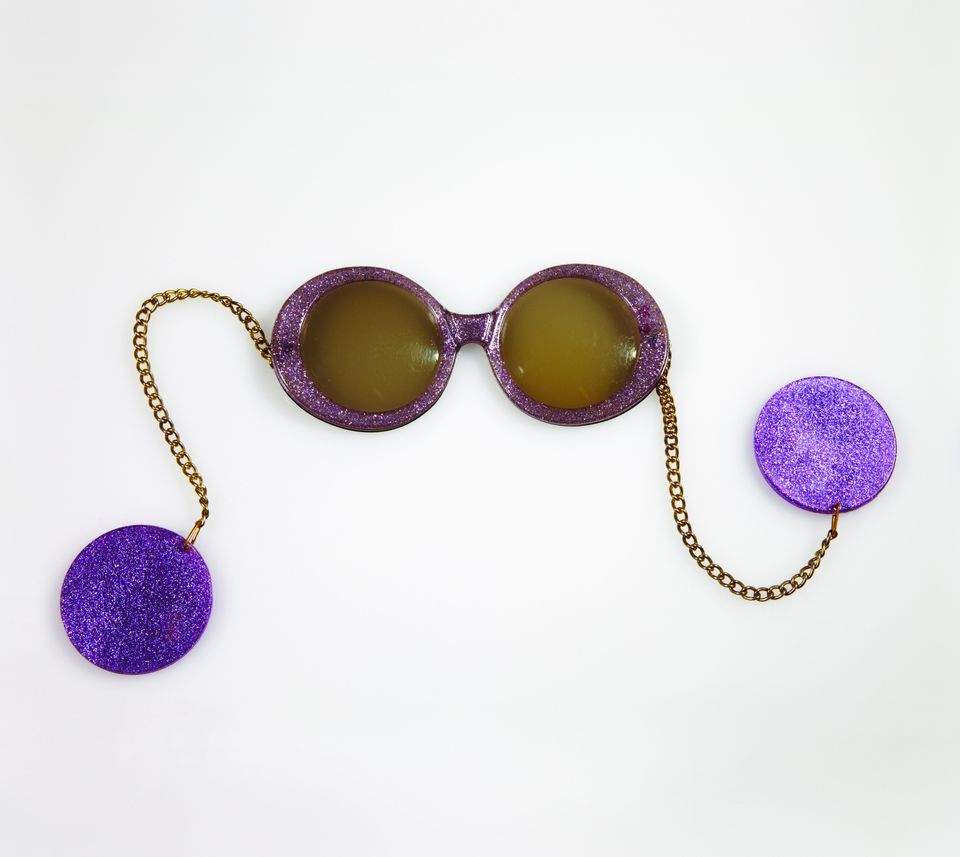
As with all things vintage, spectacle and sunglasses frames from the twentieth century are quite beautiful, offering an infinite source of design and decoration. Capturing the qualities of this particular collection in a series of highly detailed and intricate photographs for Fashion Spectacles, Spectacular Fashion [Thames & Hudson, $50.00] was an exciting task.
Without exception, the frames from bygone fashion eras exhibited in this book are surprisingly wearable for today's fashionistas and it is fascinating to observe the influence that historic design has had over contemporary style. Some of the most interesting photographs in the book highlight the close correlation between ancient functional spectacles and cutting-edge design of the twentieth century.
Ancient Inuits wore solid glasses commonly made from whalebone into which a fine horizontal slit was inserted; this gave them vision whilst shielding the harsh glare of sun on snow. These fascinating shapes were the inspiration for the "slit-shades" first introduced during the 1960s era of space-age design.
The hierarchy of sixteenth century Asia often wore circular, smoky lenses without side-arms; instead they were held in position with cords that looped over the ear and often hung down weighted with ceramic discs. These "Threaded" spectacles triggered a range of 1960s sunglasses, the discs hung down like big earrings, matching the psychedelic and glittering frames.
Early Medieval budget wooden spectacle frames, sold on street corners by peddlers were to re-emerge during the 1950s and again during the seventies as high-end fashion, their textural finishes a result of exciting developments in the plastics industry.
All were iconic examples of design styles that will be remembered, although none of the frames were commercially successful.
Each decade has its own characteristic styles, evocative not only of an era, but also the famous faces framed in the spectacles that often became their trademark. More than any other fashion accessory, the shape of a particular spectacle frame, has long been synonymous with celebrity; Buddy Holly, Elton John, John Lennon, Ghandi, Harry Potter, Jacky Onassis and many others have all worn distinguishable shapes that became an integral part of their persona.
Harold Lloyd, comedian of silent black-and-white movies of the twenties, was the first to use spectacles to help create his on-screen character. Sunglasses too, became a celebrity trademark in this decade when stars of the silver screen relied upon dark "shades" to hide their red pupils, irritated by the harsh filming lights. A long lasting trend began when the look was imitated by their fans.
This book really does celebrate the design of twentieth century glasses in its photographs, tracing the influences of fashion, music, celebrity and manufacturing in its words.
Check out these 12 beautifully eccentric glasses:
All photos by Drew Gardner
